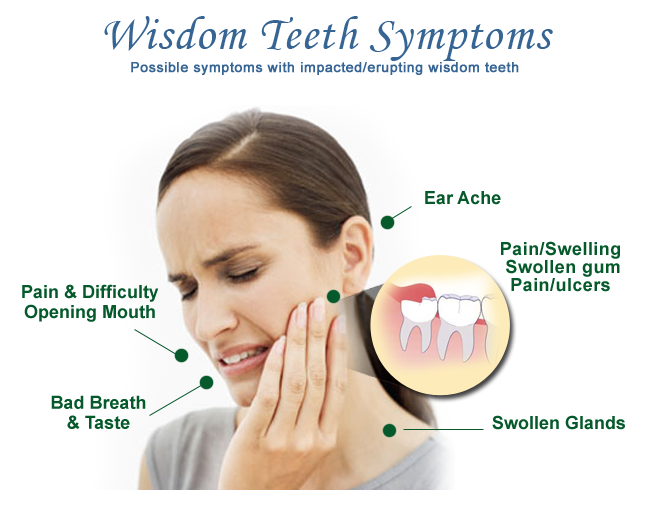
More often than not wisdom teeth, or the large molars at the very end of your jaw, become a problem and need to be removed. Typically, the reasons for wisdom teeth needing to be removed are because the wisdom teeth are too large to fit in your jaw or they grow in crooked (sometimes horizontally!).
Everybody’s wisdom teeth are different; some erupt all the way out of the gums, some half way, and some not at all. Wisdom teeth that remove hidden become impacted within your gums. Wisdom teeth that erupt half way become highly susceptible to bacteria due to how difficult it is to clean that far back in your mouth. This breeding ground for bacteria can cause oral infections and even gum diseases.
Typically, wisdom teeth are removed in young adulthood either once a problem arises or before the wisdom teeth roots have been fully developed. Some people experience jaw aches due to these teeth while some people don’t even feel a thing. It hard to determine if the teeth need to be removed until your doctor looks are you teeth through an x-ray. If you feel you may need your wisdom teeth removed consult with your doctor.
Now you may be wondering what the process is like getting your wisdom teeth removed. Some doctors will remove all four teeth at once while some remove only one or a few at a time. Either local anesthetic, numbing the specific area, or general anesthetic, causing you to sleep, will be used for the procedure. Normally, you will be asked not to eat after the midnight before your surgery so your body can handle the anesthetic.
Once the teeth are removed you will most likely be given stitches. Some stitches dissolve naturally over time while some are need to be removed a bit after the procedure.
The recovery typically lasts a few days to a week and you will be subscribed painkillers from your doctor. Be sure to relax, high activity may cause increased bleeding.
Eat soft food like gelatin, pudding, and soups. You will be asked not to use straws since the sucking motion may cause a blood clot to loosen and remove itself. Salt water rinses are also a good idea to promote healing.
Unfortunately, in some cases people develop a “dry socket” or a loose opening where the tooth was removed and you may even see white bone. You will feel a noticeable amount of pain a few days after surgery that may radiate up your cranium. If you develop a dry socket you will need to see your dentist to have the hole cleaned and filled.
JUN
2014
